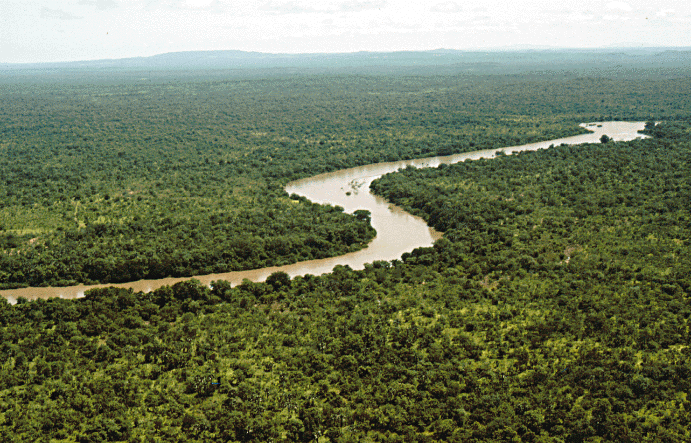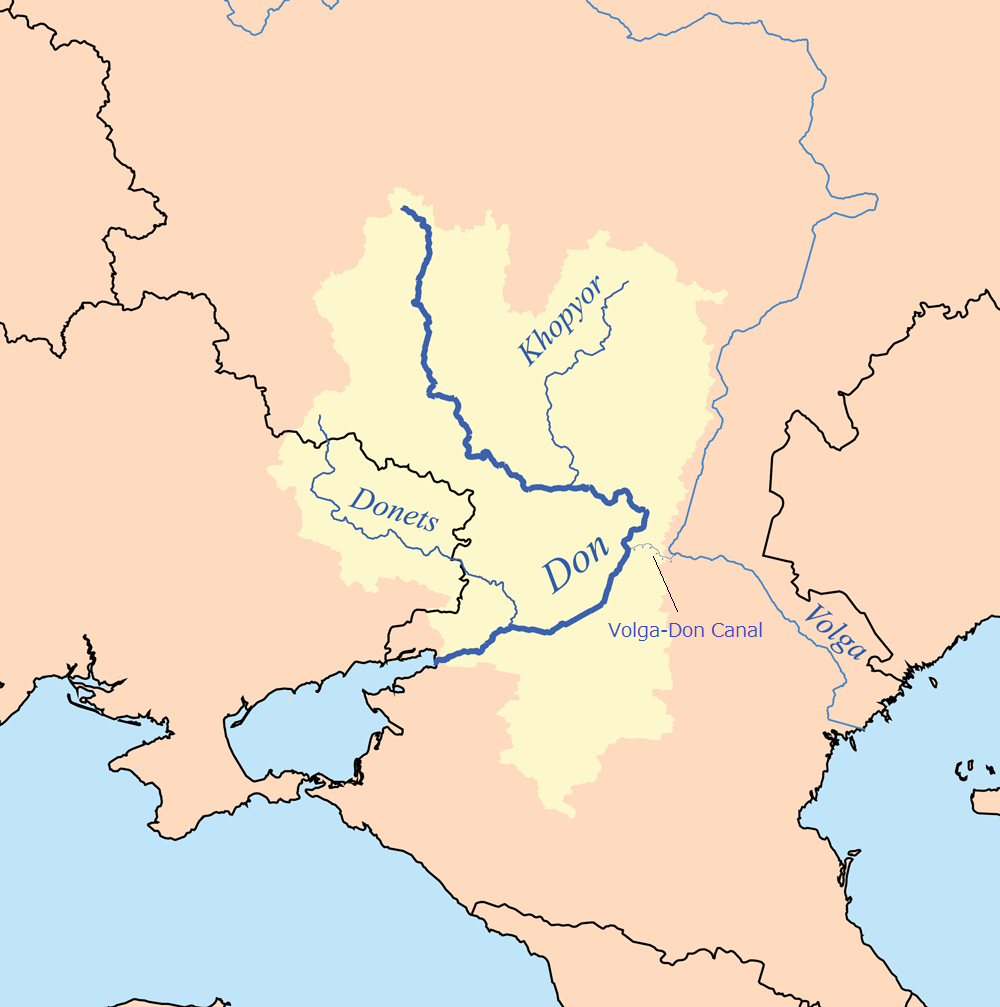|
Unified Deep Water System Of European Russia
The Unified Deep Water System of European Russia (russian: Единая глубоководная система Европейской части Российской Федерации, translit=Yedinaya glubokovodnaya sistema Yevropeyskoy chasti Rossiyskoy Federatsii) or UDWS (russian: ЕГС) is a system of inland waterways in Russia linking the White Sea, the Baltic Sea, the Volga River, Moscow, the Caspian Sea and—via the Sea of Azov—the Black Sea. In 2010, UDWS carried 70 million tons of cargo and 12 million passengers, making up two-thirds of overall inland waterway traffic volume in Russia. There are 60 common-use ports and quays in the UDWS, including three international ports (two in Moscow and one in Dmitrov, Moscow Oblast), so Moscow is sometimes called "the port of the five seas". The depth is mostly guaranteed at only and some sections are even shallower, such as Gorodets–Nizhny Novgorod at and Kochetovsky Bagayevskaya at . There are plans to increase depth ... [...More Info...] [...Related Items...] OR: [Wikipedia] [Google] [Baidu] |
United Deep Waterway System Of European Russia
United may refer to: Places * United, Pennsylvania, an unincorporated community * United, West Virginia, an unincorporated community Arts and entertainment Films * ''United'' (2003 film), a Norwegian film * ''United'' (2011 film), a BBC Two film Literature * ''United!'' (novel), a 1973 children's novel by Michael Hardcastle Music * United (band), Japanese thrash metal band formed in 1981 Albums * ''United'' (Commodores album), 1986 * ''United'' (Dream Evil album), 2006 * ''United'' (Marvin Gaye and Tammi Terrell album), 1967 * ''United'' (Marian Gold album), 1996 * ''United'' (Phoenix album), 2000 * ''United'' (Woody Shaw album), 1981 Songs * "United" (Judas Priest song), 1980 * "United" (Prince Ital Joe and Marky Mark song), 1994 * "United" (Robbie Williams song), 2000 * "United", a song by Danish duo Nik & Jay featuring Lisa Rowe Television * ''United'' (TV series), a 1990 BBC Two documentary series * ''United!'', a soap opera that aired on BBC One from 1965 ... [...More Info...] [...Related Items...] OR: [Wikipedia] [Google] [Baidu] |
White Sea–Baltic Canal
The White Sea–Baltic Canal (russian: Беломо́рско-Балти́йский кана́л, , ), often abbreviated to White Sea Canal () is a ship canal in Russia opened on 2 August 1933. It connects the White Sea, in the Arctic Ocean, with Lake Onega, which is further connected to the Baltic Sea. Until 1961, it was called by its original name: the Stalin White Sea–Baltic Canal (''Belomorsko-Baltiyskiy Kanal imeni Stalina''). The canal was constructed by forced labor of gulag inmates. Beginning and ending with a labor force of 126,000, between 12,000 and 25,000 laborers died according to official records,Сталинские стройки ГУЛАГа.1930–53», Москва, 2005, while Anne Applebaum's estimate is 25,000 deaths. The canal runs , partially along several canalized rivers and Lake Vygozero. As of 2008, it carries only light traffic of between ten and forty boats per day. Its economic advantages are limited by its minimal depth of , inadequate for most s ... [...More Info...] [...Related Items...] OR: [Wikipedia] [Google] [Baidu] |
Eurasia Canal
The Eurasia Canal (russian: Канал "Евразия", ''Kanal "Evraziya"'') is a proposed 700-kilometre-long (430 mi) canal connecting the Caspian Sea to the Black Sea along the Kuma-Manych Depression. Currently, a chain of lakes and reservoirs and the shallow irrigation Kuma-Manych Canal are found along this route. If completed the canal would also link several landlocked countries in Asia with the open seas through the Bosphorus. The canal is intended to provide a shorter route for shipping than the existing Volga–Don Canal system of waterways; it would also require fewer locks (or lower- rise locks) than the Volga-Don route. Manych Ship Canal is the existing canal system that would be the likely route for the Eurasian Canal. Potential shipping route The route of the canal, as usually proposed, would follow the thalweg (the lowest-ground line) of the Kuma-Manych Depression. From the Caspian Sea westward, the canal route would follow: * The lower course of th ... [...More Info...] [...Related Items...] OR: [Wikipedia] [Google] [Baidu] |
Ecosystem
An ecosystem (or ecological system) consists of all the organisms and the physical environment with which they interact. These biotic and abiotic components are linked together through nutrient cycles and energy flows. Energy enters the system through photosynthesis and is incorporated into plant tissue. By feeding on plants and on one another, animals play an important role in the movement of matter and energy through the system. They also influence the quantity of plant and microbial biomass present. By breaking down dead organic matter, decomposers release carbon back to the atmosphere and facilitate nutrient cycling by converting nutrients stored in dead biomass back to a form that can be readily used by plants and microbes. Ecosystems are controlled by external and internal factors. External factors such as climate, parent material which forms the soil and topography, control the overall structure of an ecosystem but are not themselves influenced by the ecosyst ... [...More Info...] [...Related Items...] OR: [Wikipedia] [Google] [Baidu] |
Caspian Seal
The Caspian seal (''Pusa caspica'', syn. ''Phoca caspica'') is one of the smallest members of the earless seal family and unique in that it is found exclusively in the brackish Caspian Sea. It lives along the shorelines, but also on the many rocky islands and floating blocks of ice that dot the Caspian Sea. In winter and cooler parts of the spring and autumn season, it populates the northern Caspian coastline. As the ice melts in the summer and warmer parts of the spring and autumn season, it also occurs in the deltas of the Volga and Ural Rivers, as well as the southern latitudes of the Caspian where the water is cooler due to greater depth. Evidence suggests the seals are descended from Arctic ringed seals that reached the area from the north during an earlier part of the Quaternary period and became isolated in the landlocked Caspian Sea when continental ice sheets melted. Description Adults are about in length. Males are longer than females at an early age, but females ... [...More Info...] [...Related Items...] OR: [Wikipedia] [Google] [Baidu] |
Sturgeon
Sturgeon is the common name for the 27 species of fish belonging to the family Acipenseridae. The earliest sturgeon fossils date to the Late Cretaceous, and are descended from other, earlier Acipenseriformes, acipenseriform fish, which date back to the Early Jurassic period, some 174 to 201 million years ago. They are one of two living families of the Acipenseriformes alongside paddlefish (Polyodontidae). The family is grouped into four genera: ''Acipenser'' (which is paraphyletic, containing many distantly related sturgeon species), ''Huso'', ''Scaphirhynchus,'' and ''Pseudoscaphirhynchus''. Two species (''Adriatic sturgeon, A. naccarii'' and ''Dabry's sturgeon, A. dabryanus'') may be extinct in the wild, and one (''Syr Darya sturgeon, P. fedtschenkoi'') may be entirely extinct. Sturgeons are native to subtropical, temperate and sub-Arctic rivers, lakes and coastlines of Eurasia and North America. Sturgeons are long-lived, late-maturing fishes with distinctive characteristics ... [...More Info...] [...Related Items...] OR: [Wikipedia] [Google] [Baidu] |
Sprat
Sprat is the common name applied to a group of forage fish belonging to the genus '' Sprattus'' in the family Clupeidae. The term also is applied to a number of other small sprat-like forage fish ('' Clupeoides'', '' Clupeonella'', '' Corica'', ''Ehirava'', '' Hyperlophus'', '' Microthrissa'', '' Nannothrissa'', ''Platanichthys'', ''Ramnogaster'', ''Rhinosardinia'', and '' Stolothrissa''). Like most forage fishes, sprats are highly active, small, oily fish. They travel in large schools with other fish and swim continuously throughout the day.Meskendahl, L., J.-P. Herrmann, and A. Temming. "Effects of Temperature and Body Mass on Metabolic Rates of Sprat, Sprattus Sprattus L." ''Marine Biology'' 157.9 (2010): 1917–1927. Academic Search Premier. Web. 26 November 2011. p. 192/ref> They are recognized for their nutritional value, as they contain high levels of polyunsaturated fats, considered beneficial to the human diet. They are eaten in many places around the world. Sprats ar ... [...More Info...] [...Related Items...] OR: [Wikipedia] [Google] [Baidu] |
Mnemiopsis
''Mnemiopsis leidyi'', the warty comb jelly or sea walnut, is a species of tentaculate ctenophore (comb jelly). It is native to western Atlantic coastal waters, but has become established as an invasive species in European and western Asian regions. Three species have been named in the genus ''Mnemiopsis'', but they are now believed to be different ecological forms of a single species ''M. leidyi'' by most zoologists. Description and ecology ''Mnemiopsis'' have an oval-shaped and transparent lobed body, with four rows of ciliated combs that run along the body vertically and glow blue-green when disturbed. They have several feeding tentacles. Unlike cnidarians, ''Mnemiopsis'' does not sting. Their body comprises 97% water. They have a maximum body length of roughly and a diameter of . It is euryoecious, tolerating a wide range of salinity (2 to 38 psu), temperature (), and water quality. ''Mnemiopsis'' is a carnivore that consumes zooplankton including crustaceans, other comb ... [...More Info...] [...Related Items...] OR: [Wikipedia] [Google] [Baidu] |
Don River (Russia)
The Don ( rus, Дон, p=don) is the fifth-longest river in Europe. Flowing from Central Russia to the Sea of Azov in Southern Russia, it is one of Russia's largest rivers and played an important role for traders from the Byzantine Empire. Its basin is between the Dnieper basin to the west, the lower Volga basin immediately to the east, and the Oka basin (tributary of the Volga) to the north. Native to much of the basin were Slavic nomads. The Don rises in the town of Novomoskovsk southeast of Tula (in turn south of Moscow), and flows 1,870 kilometres to the Sea of Azov. The river's upper half ribbles (meanders subtly) south; however, its lower half consists of a great eastern curve, including Voronezh, making its final stretch, an estuary, run west south-west. The main city on the river is Rostov-on-Don. Its main tributary is the Seversky Donets, centred on the mid-eastern end of Ukraine, thus the other country in the overall basin. To the east of a series ... [...More Info...] [...Related Items...] OR: [Wikipedia] [Google] [Baidu] |
Volga–Don Canal
Lenin Volga–Don Shipping Canal ( Russian:Волго-Донской судоходный канал имени, ''В. И. Ленина, Volga-Donskoy soudokhodniy kanal imeni V. I. Lenina'', abbreviated ВДСК, ''VDSK'') is a ship canal in Russia. It connects the Volga and the Don at their closest points. Opened in 1952, its length is , of which is through rivers and reservoirs. The canal forms a part of the Unified Deep Water System of European Russia. Together with the lower Volga and the lower Don, the canal provides the shortest navigable connection between the Caspian Sea and the world's oceans, if the Mediterranean is counted, via the Sea of Azov and the Black Sea. History There has been a trade and military route between the Volga and Don rivers from early human history. The existence of fortified settlement Tanais in the Don River delta, present since a time in the Bosporan Kingdom 438 BC– 370 AD, strongly suggests the route may have been notable enough t ... [...More Info...] [...Related Items...] OR: [Wikipedia] [Google] [Baidu] |



.jpg)
_2.jpg)

